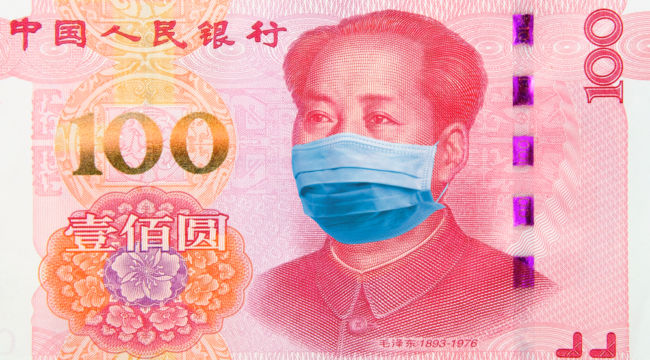Contagion!
The world is confronting the effects of the “coronavirus.” It likely originated in Wuhan, China, where it jumped from animals to humans at a local food market. It has since spread to other parts of China and beyond.
So far, there are 2,886 confirmed total cases of the coronavirus. All but 61 of them are in mainland China. The death toll so far is 81.
But cases have also been found in France, the U.S., Canada, Australia, Japan, South Korea and elsewhere. That list includes the world’s three largest economies (the U.S., China and Japan).
For many, it recalls the SARS outbreak of 2003, which also originated in China. It ultimately killed 774 people and infected more than 8,000 in different parts of the world.
Not surprisingly, global markets are on edge over fears of the “coronavirus” contagion spreading. And the U.S. stock market sold off today.
The Dow lost 454 points. The S&P and Nasdaq also had awful days. But gold has a good day, up over $10 to $1,582, as investors looked for safety.
But let’s discuss the word “contagion,” because it applies to both human populations and financial markets — and in more ways than you may expect.
There’s a reason why financial experts and risk managers use the word “contagion” to describe a financial panic.
Obviously, the word contagion refers to an epidemic or pandemic. In the public health field, a disease can be transmitted from human to human through coughing, shared needles, shared food or contact involving bodily fluids.
An initial carrier of a disease (“patient zero”) may have many contacts before the disease even appears.
Some diseases have a latency period of weeks or longer, which means patient zero can infect hundreds before health professionals are even aware of the disease. Then those hundreds can infect thousands or even millions before they are identified as carriers.
In extreme cases, such as the “Spanish flu” pandemic of 1918–20 involving the H1N1 influenza virus, the number infected can reach 500 million and the death toll can run over 100 million.
A similar dynamic applies in financial panics.
It can begin with one bank or broker going bankrupt as the result of a market collapse (a “financial patient zero.”)
But the financial distress quickly spreads to banks that did business with the failed entity and then to stockholders and depositors of those other banks and so on until the entire world is in the grip of a financial panic as happened in 2008.
Still, the comparison between medical pandemics and financial panics is more than a metaphor.
Disease contagion and financial contagion both work the same way. The nonlinear mathematics and system dynamics are identical in the two cases even though the “virus” is financial distress rather than a biological virus.
But what happens when these two dynamic functions interact? What happens when a biological virus turns into a financial virus?
We’re seeing it happen in China.
It’s the time of the Lunar New Year holiday in China, China’s most important public holiday. It’s traditionally a time of widespread celebration.
But, for many Chinese cities, not this year.
Many major Chinese cities have been shut down, with no citizens allowed to leave, and their transportation systems have been closed.
Retails sales are also suffering as consumers remain home instead of risking contagion with trips to the store.
The disease is causing financial panic in China at a time when it can least afford it. GDP growth has hit a wall and investors have curtailed new investment.
Could it unleash a global financial panic that ultimately results in a lockdown of the banking system?
It’s possible, but it’s far too soon to say. This is the type of catalyst that could take a year to build.
But it definitely bears watching.
Regards,
Jim Rickards
for The Daily Reckoning



Comments: